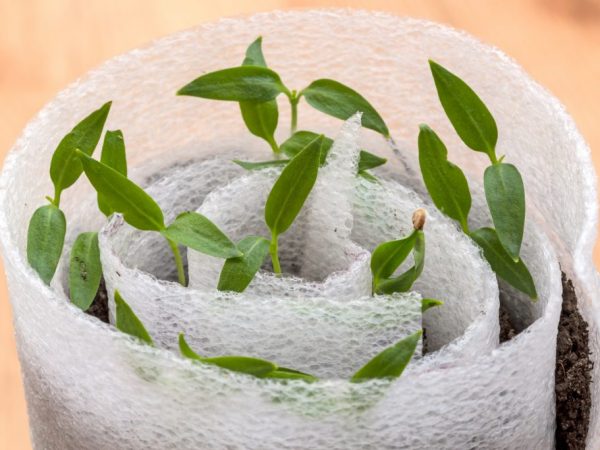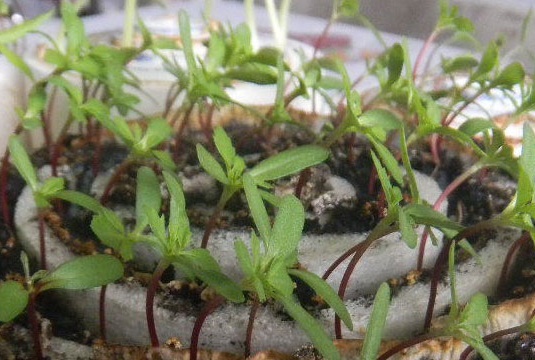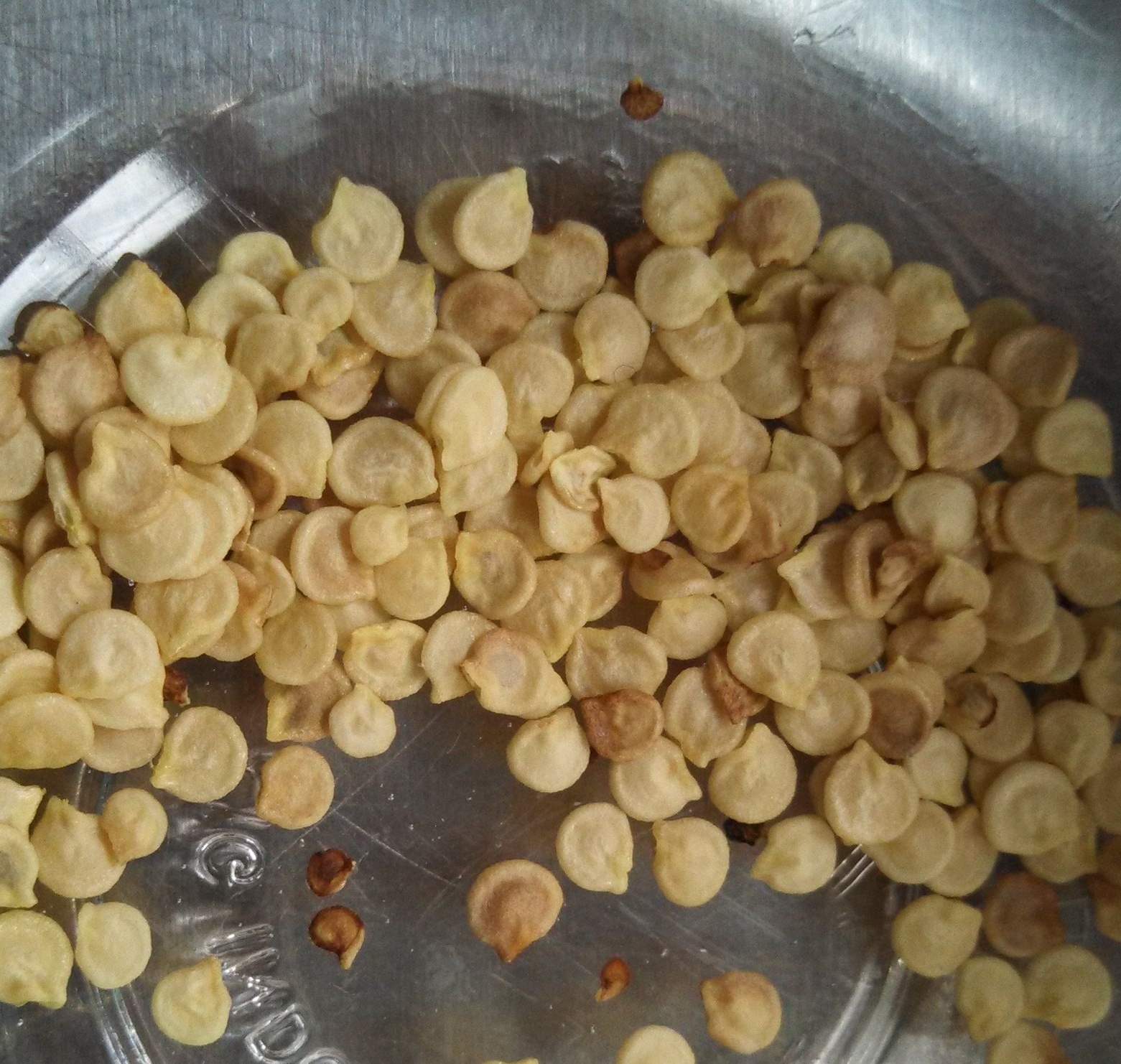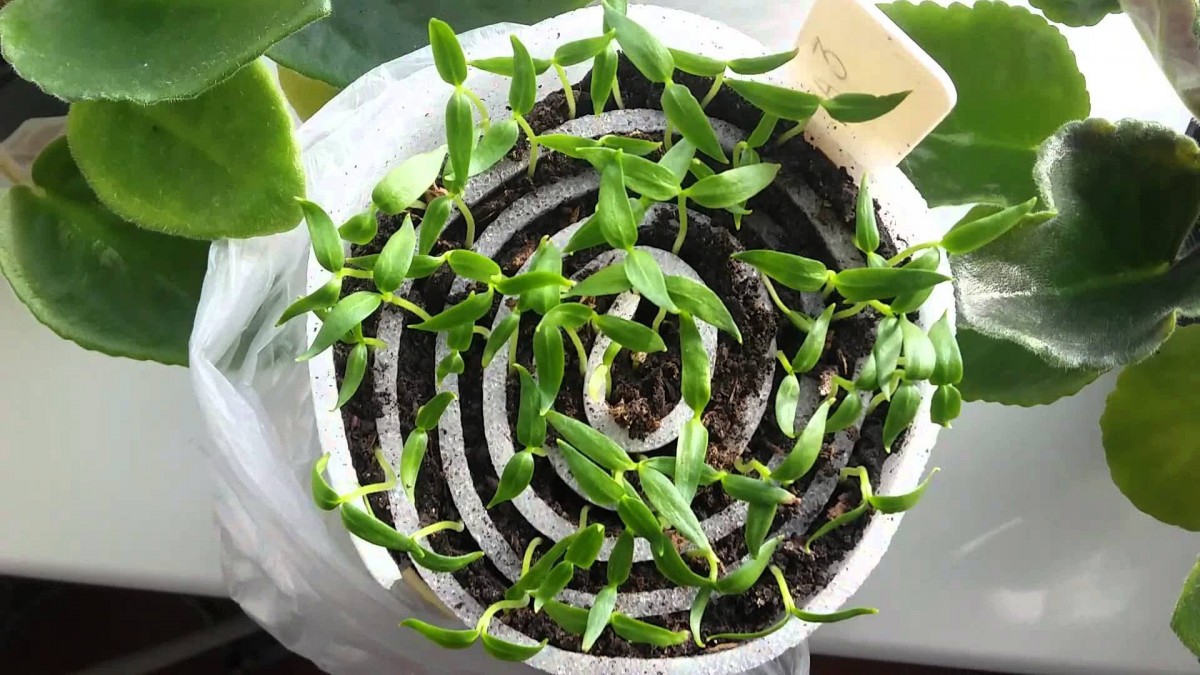Growing seedlings, especially fragile and tender peppers, is a rather difficult and painstaking process. The gardener needs to choose not only high-quality planting material and prepare it for sowing, but also choose the right soil, capacity for plants and the most suitable place in the apartment. Often, summer residents are faced with the problem of lack of space, because the boxes with seedlings are very large and occupy a lot of space, especially in a small apartment.
This problem can be solved using the original method - sprouting pepper in a snail. It not only helps growers save space, but also allows them to get strong seedlings without the use of picking. Even novices who are just beginning to learn the basics of vegetable growing can cope with growing a culture in a snail.
Content
What is a snail for seedlings?
A snail is a soft substrate under a laminate, which is twisted into a roll. Thanks to its separate compartments, it is possible to sow dozens of seeds in it, without fear of plexus roots. This method has many advantages:
- the ability to control soil moisture and seed germination;
- Plants grown in the cochlea are less likely to stretch and are practically not sick. With proper care, the soil does not mold, and seedlings are less likely to be affected by a black leg;
- when using this method, picking can be avoided, which has a positive effect on both growth and yield;
- compactness - about 100 full-fledged plants can be grown in a cochlea with a diameter of 20 cm;
- low cost of construction and consumables.

Some gardeners note that the main disadvantage of a snail is the extension of seedlings, but with another method of germination, plants can stretch out due to waterlogging of the substrate or lack of lighting.
The technology of planting pepper in a snail
Vegetable growers prefer to grow pepper for seedlings at home. For this, planting material is sown in the soil around the end of February or the beginning of March. For central Russia, landing is carried out in the second half of March.
 You may be interested in:
You may be interested in:Seed preparation
Germination and the amount of future harvest depend on the proper selection and preparation of seeds. If planting material has already been processed, then it can immediately be sown in the soil. In the case of the purchase of ordinary seeds (or the use of self-collected), experienced gardeners are advised to read the following rules:
- First of all, you should choose the right seed material.

When buying, it is important to pay attention to the expiration date and packaging. - Unpacked seeds are poured with distilled (melt) water in order to reject emerging specimens and leave for 1 hour.
- A weak solution of potassium permanganate is prepared and planting material is placed there for disinfection.
- Seeds are removed from the liquid and wrapped in a heated cloth. They should stay there for a day.
After completing all the procedures, you can begin to prepare seed planting.
Necessary materials
After preparing the seeds, it is necessary to prepare a fertile soil mixture.It should be light, without foreign inclusions. You can sift the soil through a garden sieve, and then moisten it so that it keeps clod after squeezing in your hand. Then proceed to the preparation of the basic materials for creating a snail:
- The thickness of the porous polypropylene substrate under the laminate should be about 2 mm. Polypropylene is an environmentally friendly material, and can come into contact with food.
- You will need toilet paper (it is best to use a two-layer).
- To fix the structure, you can take a thin rope or elastic band.

Snail Seeds - Prepare a water tank and spray bottle.
- For the convenience of sowing, you can use tweezers.
- A bag or cling film will help create greenhouse conditions.
- Sawdust is prepared to avoid moisture accumulation. As a container, you can use a plastic bucket or other containers for food. The diameter of the container should be 1-5 cm larger than the diameter of the cochlea.
Some vegetable growers use when sowing growth stimulants Epin or Egen.
Cultivation agricultural
First of all, the substrate is cut into strips about 10 cm wide. Toilet paper is laid out on its surface so that the upper edge of the substrate is 1.5 cm higher. The paper is moistened with water or a growth stimulant. Planting material is laid out, stepping back from the edge of the strip 4 cm. The distance between the seeds should be at least 2 cm.

After 5-7 days, the snail is deployed and the germination of crops is checked. If there are seeds that have not hatch, they are replaced with new ones. After that, a substrate is poured over the entire surface of the tape, the layer of which should not exceed 1.5 cm. The soil is slightly compacted and moistened with a spray gun. The substrate is folded into a cochlea and fixed. The bottom of the container is lined with a small layer of sawdust, snails are placed there and generously watered with a spray gun. The container is covered with a film, and after emergence, it is gradually removed.
Planting pepper without diving in open ground
Growing a culture in a snail is gaining popularity every year, because in it you can grow healthy seedlings without diving.
7-10 days before transplanting to a permanent place, seedlings begin to temper, bringing it to the open air. The duration of the first "walks" should be no more than 20 minutes, then this time is gradually increased. After hardening, the plants will get used to the street conditions and better tolerate the transplant.
The soil in the garden should be moderately fertile and light. It is better that the soil reaction is slightly acidic or neutral. Before planting seedlings, the soil is well loosened and leveled. A distance of about 50 cm should be left between the rows, and 40-45 cm between the holes. Some vegetable growers use a more thickened planting according to the 20 × 50 cm pattern, so as not to tie up the bushes. The plants lean on each other, so even with a strong gust of wind, the pepper bushes will not break.
The snail is transferred to the garden, carefully deployed and the seedlings are removed along with an earthen lump. Tall varieties are best planted in the center of the garden, and dwarf and stunted - along the edge. Plants should be planted at the same level at which they were in the cochlea. The sprout is buried in the hole, sprinkled with soil and slightly raised so that the root takes the correct position. After that, the soil is compacted around the plant and watered. It is advised to mulch the beds with dry soil or peat.
Arcs can be installed above the bed, and so that the film does not sag, twine is pulled between them on both sides.
Further plant care
After planting, the culture needs 10-12 days to adapt to a new place. At this time, the sprouts may look sluggish and painful.With minor damage to the root system, the plant survives well in open ground. For better rooting, you can dig a little soil in the hole to provide the roots with fresh air. The main loosening of the soil can be carried out three weeks after planting.
Watering in the early days is carried out carefully, since an excessive amount of liquid can provoke decay, and a lack of it will wither seedlings. The best option is to daily moisten the soil near the stem, using 100-150 ml of water per bush. Normal watering can be started a week after planting.

This method of irrigation has a positive effect on the taste of the crop. During fruit ripening, the bushes are watered 1 time in 5 days with plenty of water. Compliance with the watering regime will allow you to grow tasty, juicy and fleshy peppers.
Among the variety of top dressing, vegetable growers emit phosphates and urea. For fertilizer, bird droppings and cow dung are also used, which are pre-bred with water. Special feeding should be done if it was possible to determine the problem of the plant:
- if the bush has acquired a purple hue - it lacks phosphorus;
- if burns appear on the deciduous part, potassium deficiency is most likely in the soil.
Common questions about growing pepper in a snail
A snail is an unusual and rather practical way to grow full seedlings even in a small apartment. The main advantage of the method is the ability to plant plants directly in the open ground, without preliminary diving.




 Calorie pepper stuffed with meat and rice - BZHU per 100 grams
Calorie pepper stuffed with meat and rice - BZHU per 100 grams Gorky pepper - the best varieties for open ground
Gorky pepper - the best varieties for open ground Hot pepper seeds - the best varieties for open ground and reviews
Hot pepper seeds - the best varieties for open ground and reviews Capsicum tincture for hair - how to use and reviews
Capsicum tincture for hair - how to use and reviews